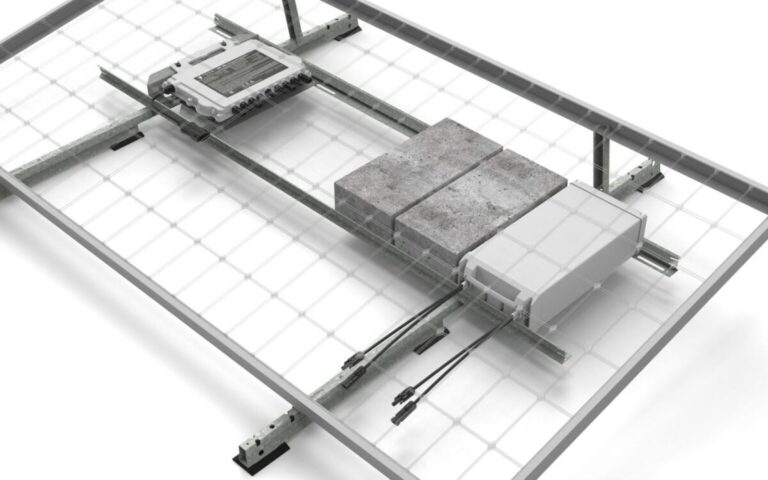The new plug-and-play modules of the energy storage startup offer a kilowatt storage in a small package.
Energy Storage Company Yotta Energy unveiled the Yotta Block, the next evolution of the company Solarleaf battery. Designed to replace a standard ballast block in a solar panel, the Yotta block offers a kilowatt battery storage while the need for individual storage space is eliminated.
“One of the challenges that our founders were confronted with was where to place the batteries,” said Yotta CEO Jordan Harris in an interview with PV Magazine USA. “Where you want to place them, does not always overlap where you can place them; This will be an important challenge that adds cost and complexity. “
He explained that the desire to contain batteries and solar sun on the roof, the company led to develop the Yotta block that has the same dimensions and weight as a normal ballast block. By exchanging the Yotta block, Harris said, the already filled space is made more useful by adding energy storage options.
And they are universal compatible with all the important racking models.
“The marginal costs or time of installing that battery compared to a ballast block are effective zero,” said Harris, because it does not take extra space or adds weight.
The lithium-iron phosphate blocks the retail trade for $ 900 per kilowatt hour per unit; Companies can buy directly at Yotta or through distributors such as Greentech Renewables. Although the price at first glance may seem steep, Harris C&I developers encourages to look beyond the hardware costs.
“Hardware is only part of the project, but soft costs in the small and medium -sized C&I market can be considerable,” he said, adding that they can make up 30% to 40% of the costs of a project. “When you standardize around a solution that uses everything on the roof, your soft costs are lowered or eliminated.”
In this way, projects have standardized equipment and installation processes; And no other infrastructure upgrades are needed to install Yotta blocks. They make those plug-and-play options, in combination with their size and partial reductions, competitive with other storage solutions.
This applies in particular to large companies that want to use solar energy and storage. If a company has hundreds or thousands of buildings under their management, it is not feasible for them to make a project-for-project tech decision, Harris explained.
“In those situations, companies want to make a single technical decision that standardizes everything as possible and uses it in their entire footprint,” he said, noted that a project that does exactly for an American Dollar Corporation is in the making is Yotta.
“If they ever want to use [solar and storage] They have to take a hardware decision on their entire footprint, “Harris added. “Our solution makes that possible.”
Although the layout can differ from one solar -seam from another, the basic components will be the same.
“The installation team and the operations and maintenance teams already know how to deal with ballast blocks and have a standardized process to install them,” said Harris. “Our batteries slot in it; It streamlines enormously everything, which leads to cost savings and better economy. “
This content is protected by copyright and may not be reused. If you want to work with us and reuse part of our content, please contact: editors@pv-magazine.com.


